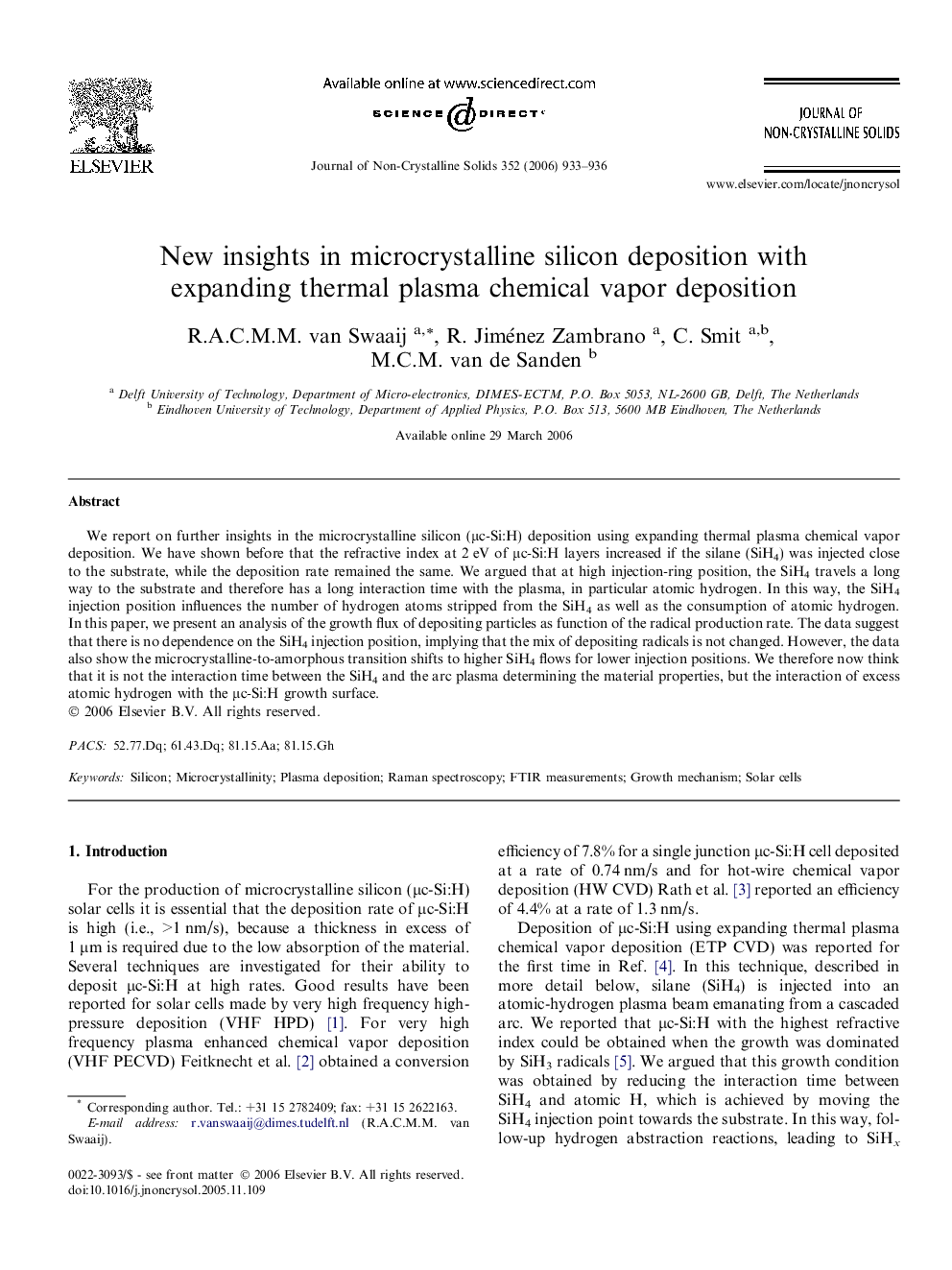| Article ID | Journal | Published Year | Pages | File Type |
|---|---|---|---|---|
| 1486313 | Journal of Non-Crystalline Solids | 2006 | 4 Pages |
We report on further insights in the microcrystalline silicon (μc-Si:H) deposition using expanding thermal plasma chemical vapor deposition. We have shown before that the refractive index at 2 eV of μc-Si:H layers increased if the silane (SiH4) was injected close to the substrate, while the deposition rate remained the same. We argued that at high injection-ring position, the SiH4 travels a long way to the substrate and therefore has a long interaction time with the plasma, in particular atomic hydrogen. In this way, the SiH4 injection position influences the number of hydrogen atoms stripped from the SiH4 as well as the consumption of atomic hydrogen. In this paper, we present an analysis of the growth flux of depositing particles as function of the radical production rate. The data suggest that there is no dependence on the SiH4 injection position, implying that the mix of depositing radicals is not changed. However, the data also show the microcrystalline-to-amorphous transition shifts to higher SiH4 flows for lower injection positions. We therefore now think that it is not the interaction time between the SiH4 and the arc plasma determining the material properties, but the interaction of excess atomic hydrogen with the μc-Si:H growth surface.
